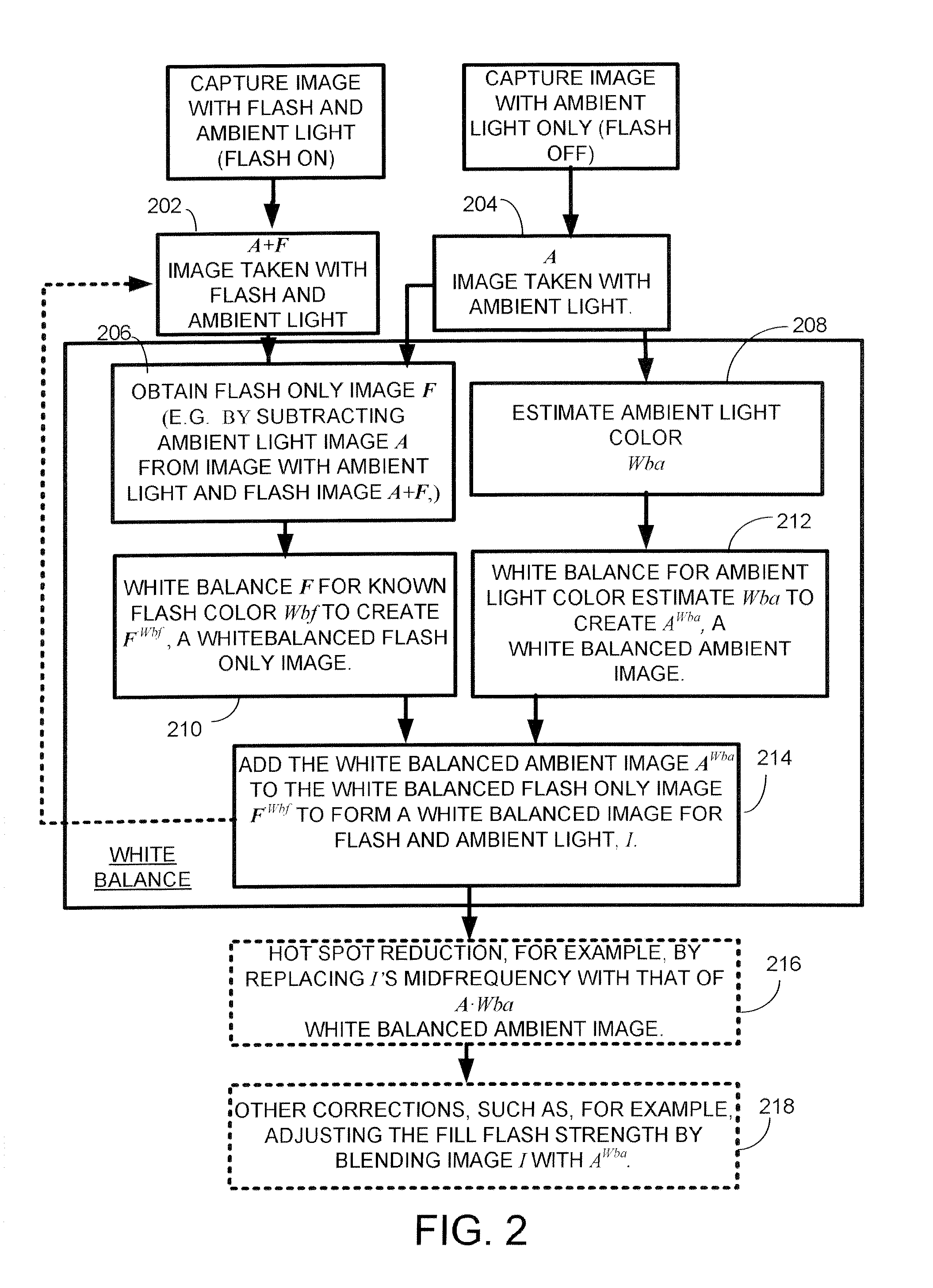Adaptive Processing For Images Captured With Flash
a technology of image processing and flash, applied in the field of adaptive processing of images captured with flash, can solve the problems of not being able to find the right amount of flash, subject may appear too dark in comparison to the bright background, and unflattering dark rings under eyes and the neck, etc., to achieve the effect of simplifying the use of fill-flash photography and improving the look
- Summary
- Abstract
- Description
- Claims
- Application Information
AI Technical Summary
Benefits of technology
Problems solved by technology
Method used
Image
Examples
Embodiment Construction
[0019]In the following description, reference is made to the accompanying drawings that form a part hereof, and in which is shown by way of illustration specific embodiments in which the invention may be practiced. It is understood that other embodiments may be utilized and structural changes may be made without departing from the scope of the present disclosure.
2.0 Adaptive Fill-Flash Technique.
[0020]The present adaptive fill-flash technique describes a photo acquisition and manipulation technique for digital photography. The adaptive fill-flash technique improves the look and simplifies the use of fill-flash photography, in particular in the case of, but not limited to, portrait photography.
[0021]The adaptive fill-flash technique is a technique for digital photography that employs flash and no-flash image pairs. This image pair provides a few interesting properties. First, the flash will separate the image into foreground and background, because the flash power falls off with the...
PUM
 Login to View More
Login to View More Abstract
Description
Claims
Application Information
 Login to View More
Login to View More - R&D
- Intellectual Property
- Life Sciences
- Materials
- Tech Scout
- Unparalleled Data Quality
- Higher Quality Content
- 60% Fewer Hallucinations
Browse by: Latest US Patents, China's latest patents, Technical Efficacy Thesaurus, Application Domain, Technology Topic, Popular Technical Reports.
© 2025 PatSnap. All rights reserved.Legal|Privacy policy|Modern Slavery Act Transparency Statement|Sitemap|About US| Contact US: help@patsnap.com



